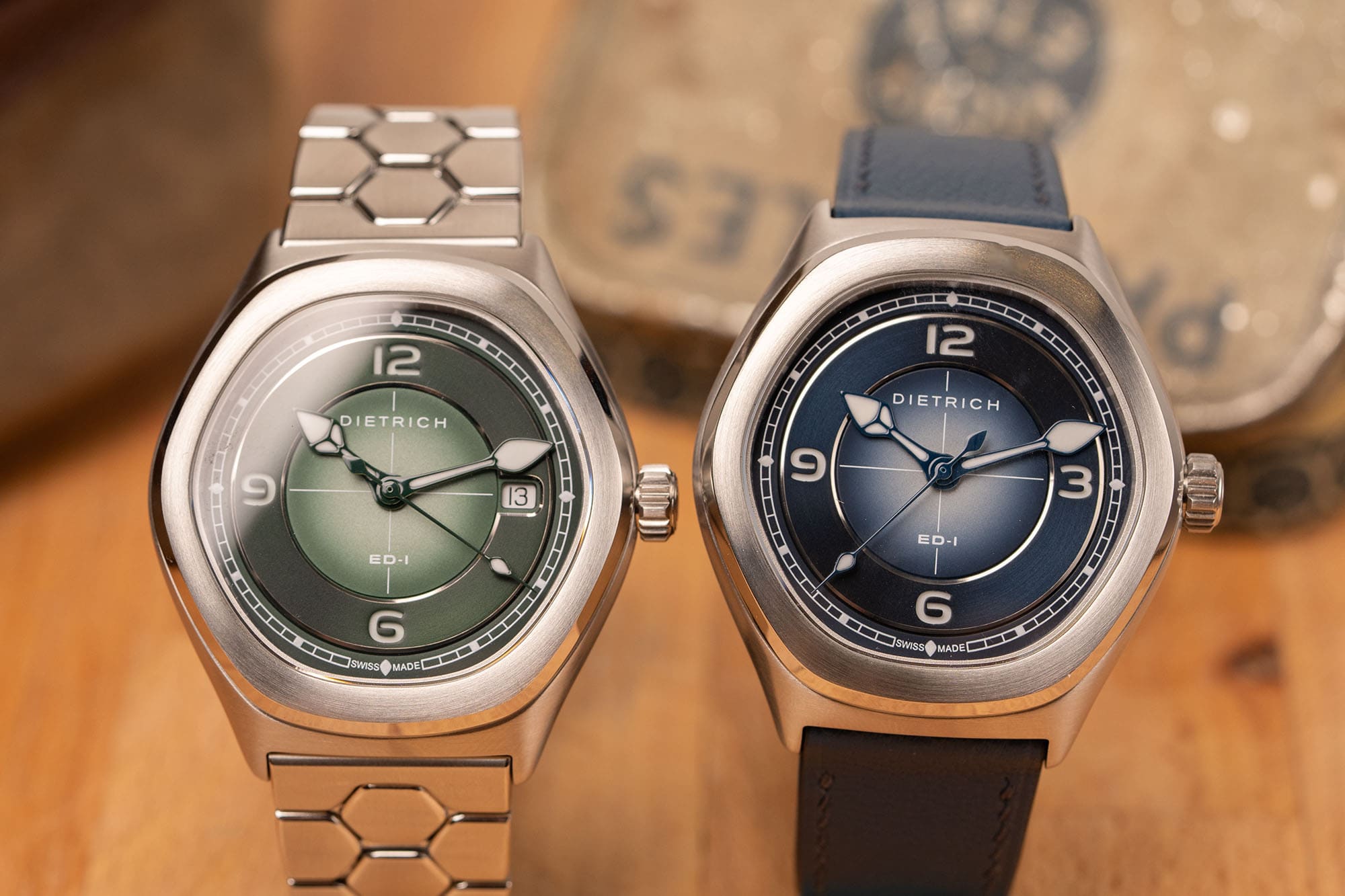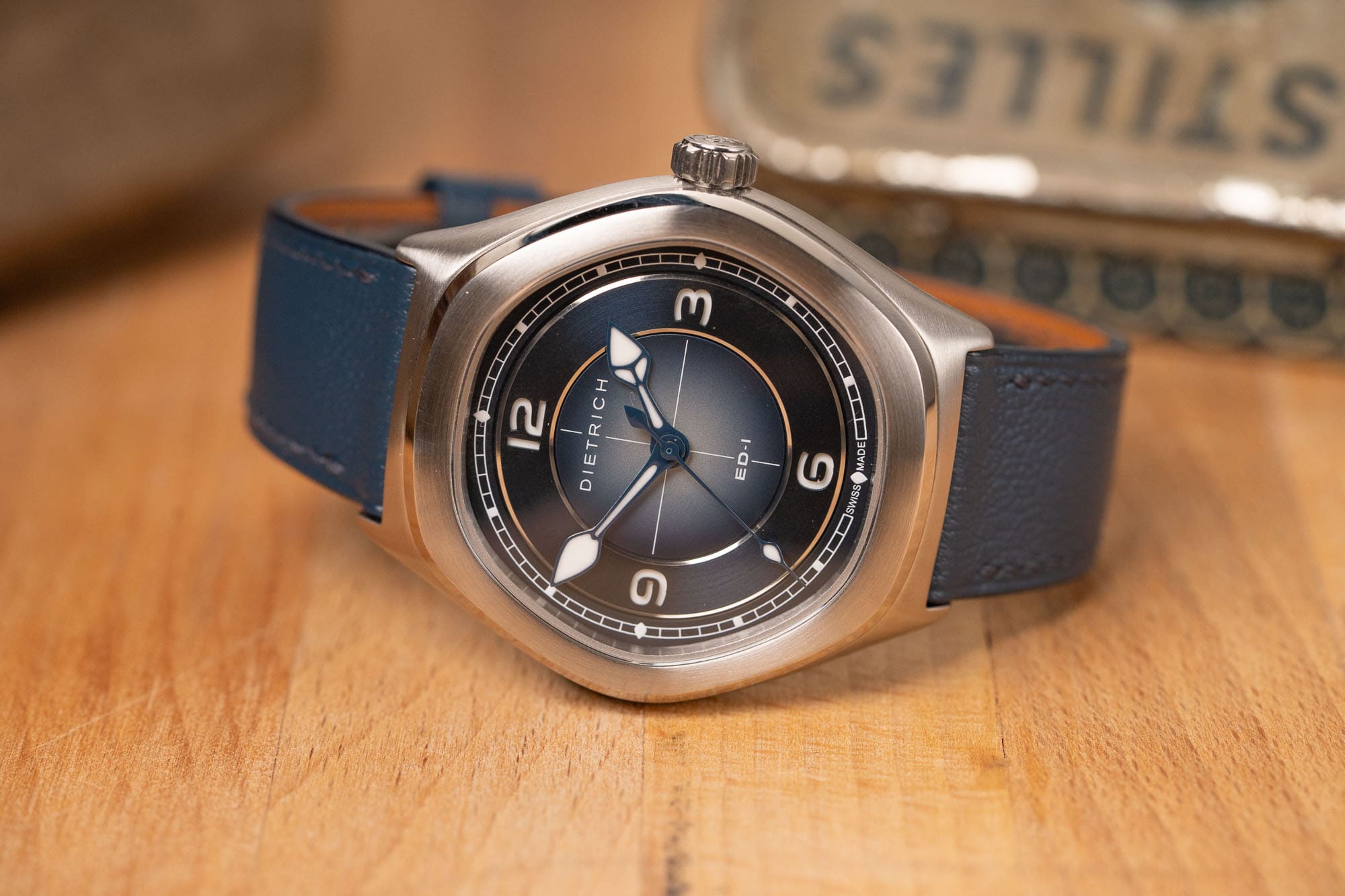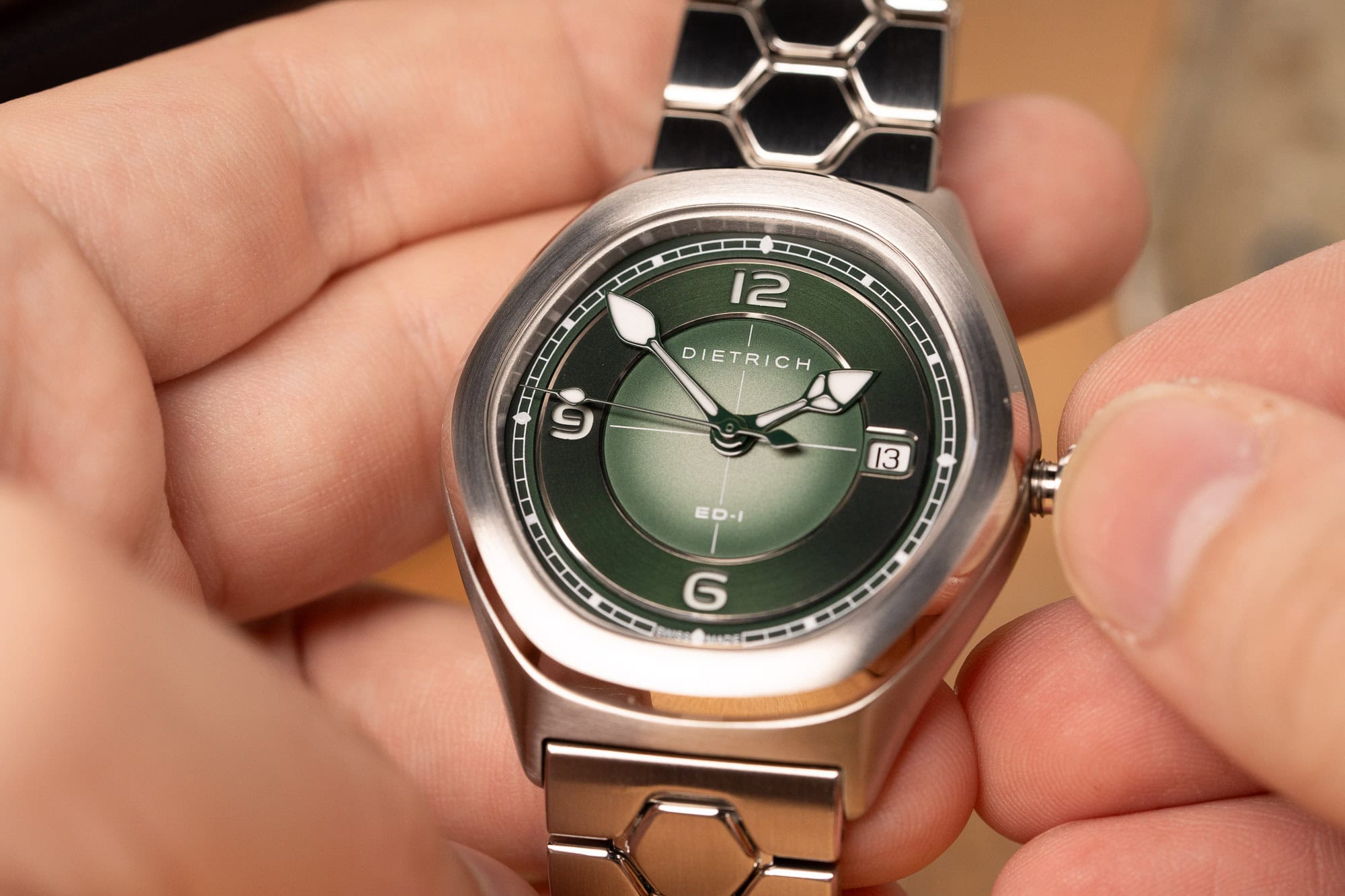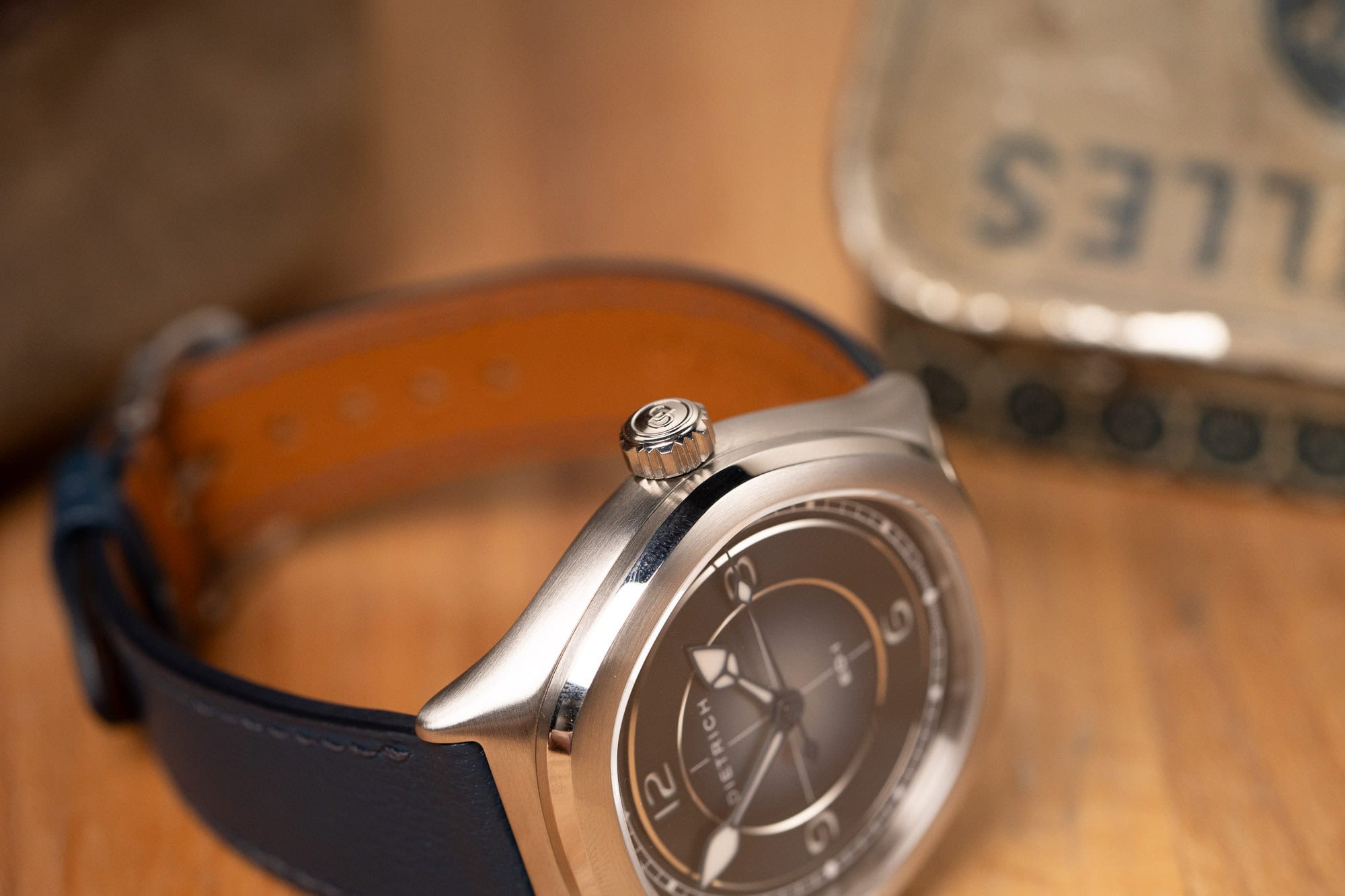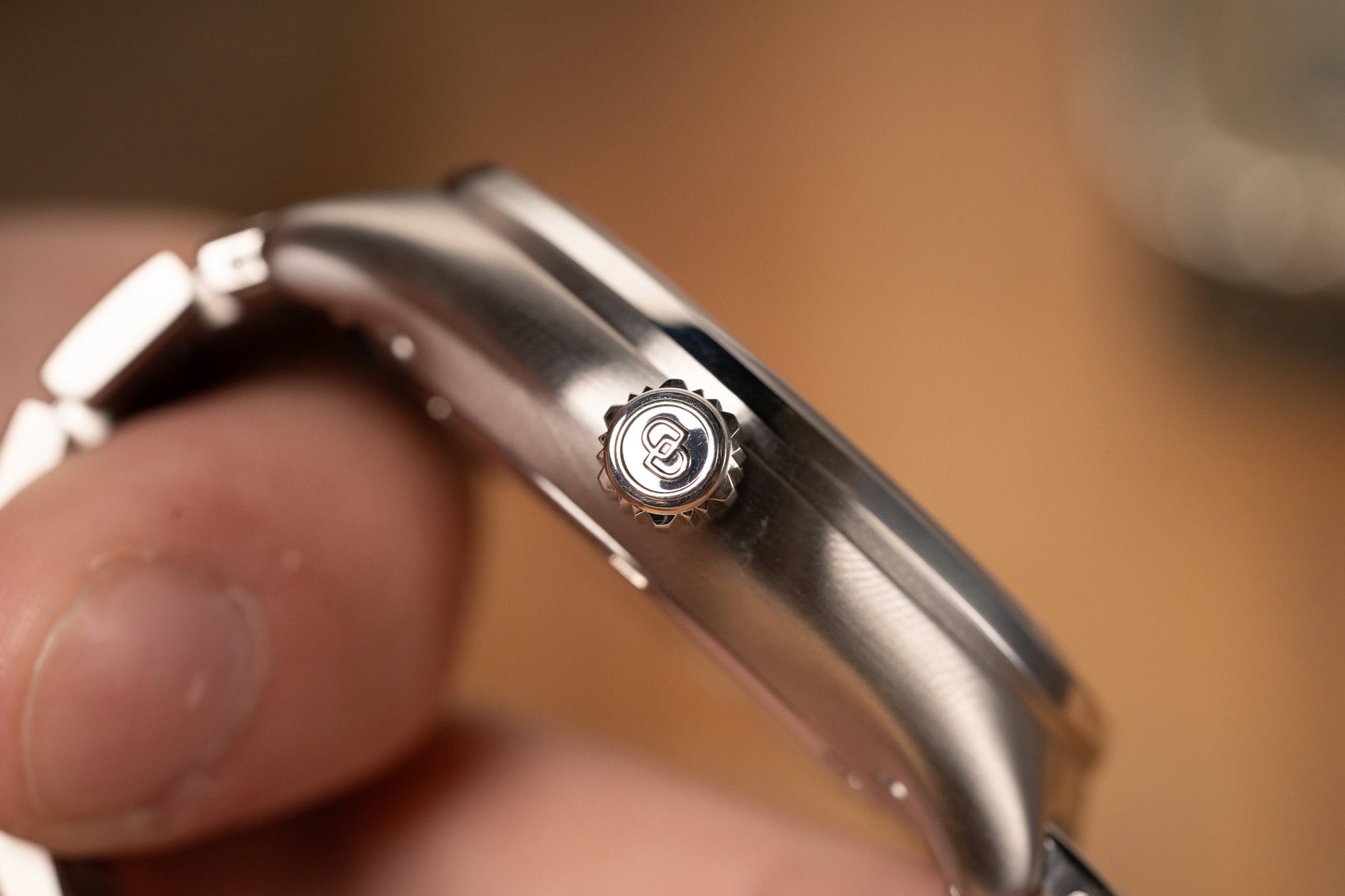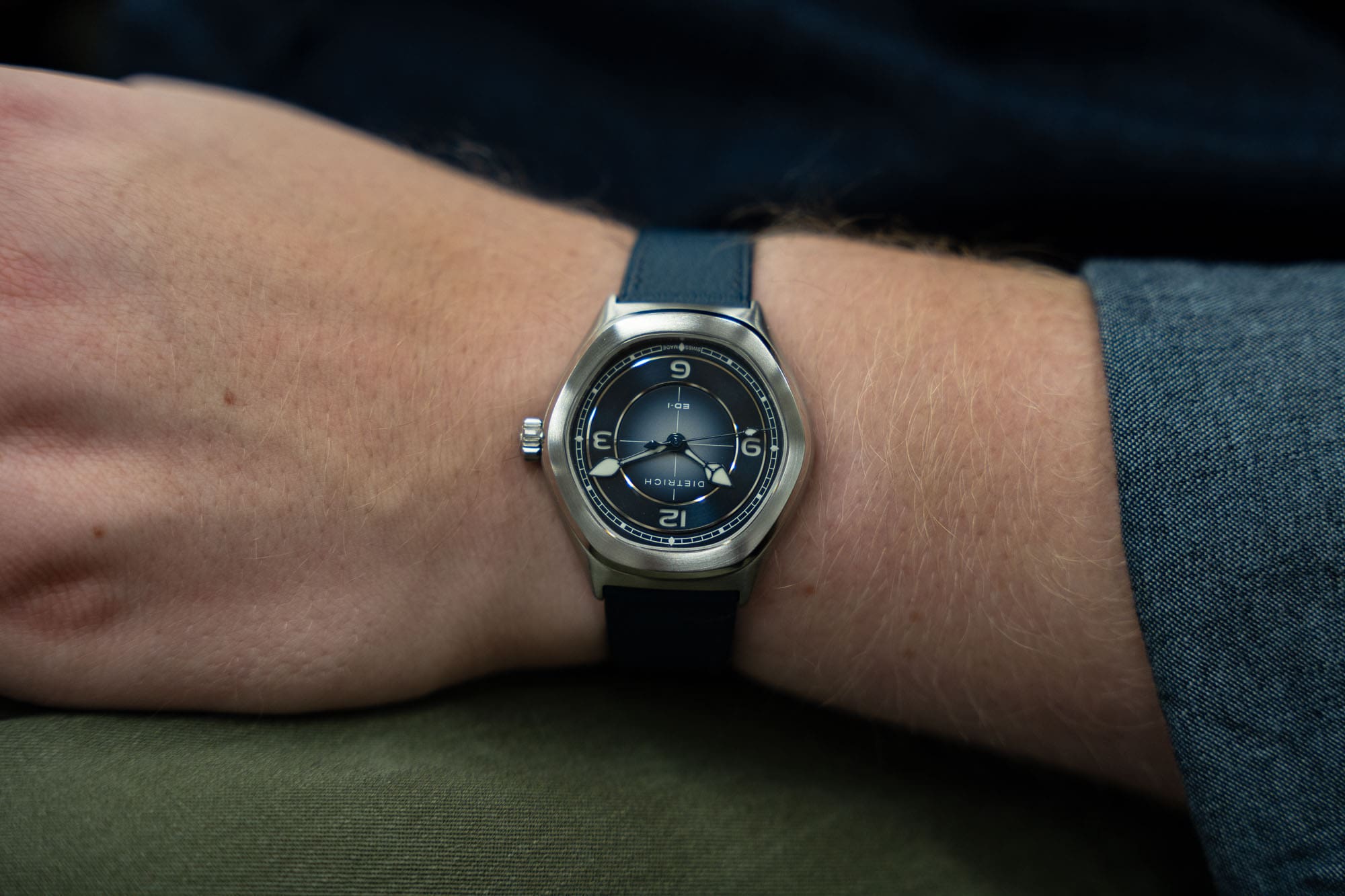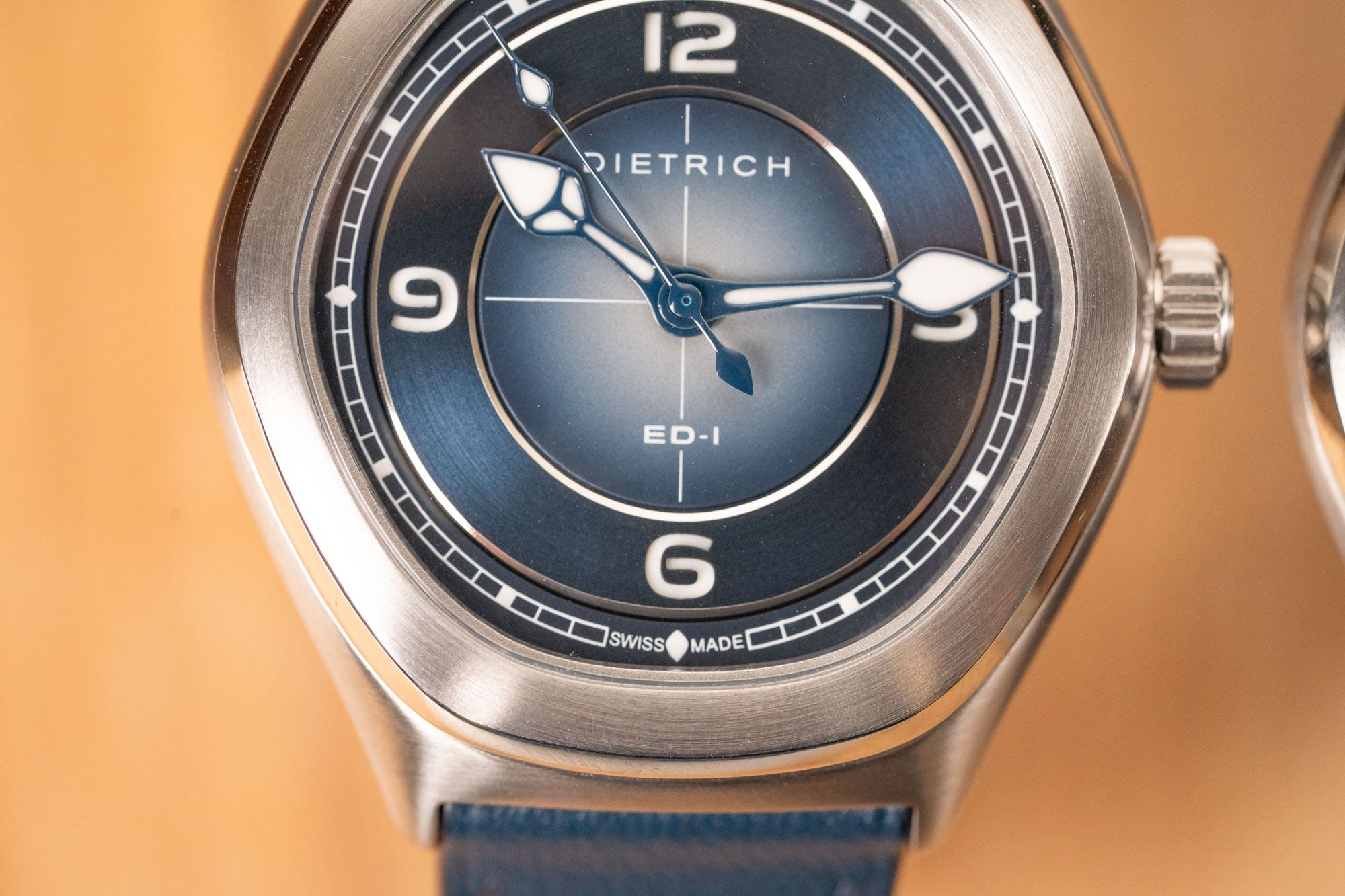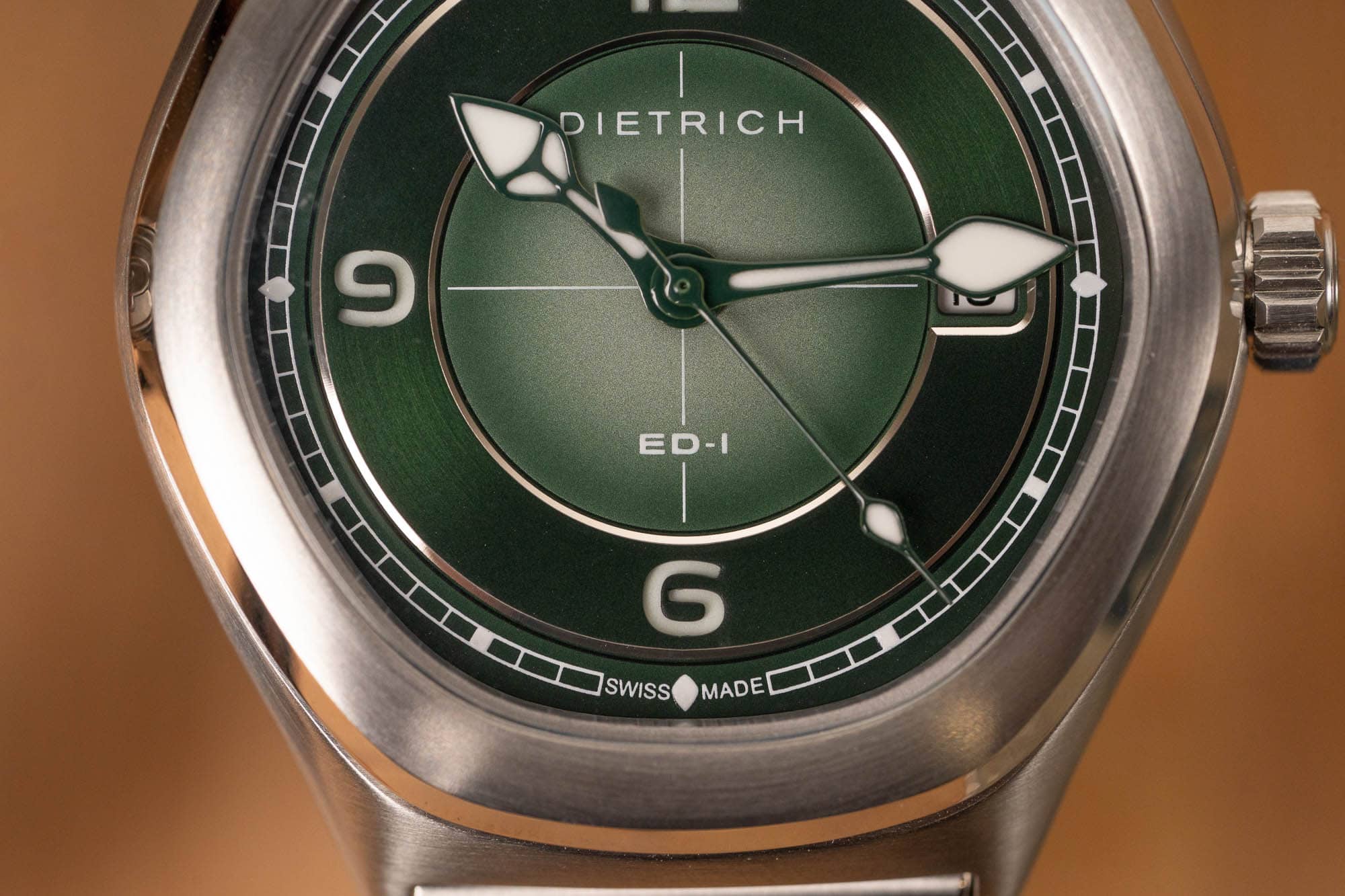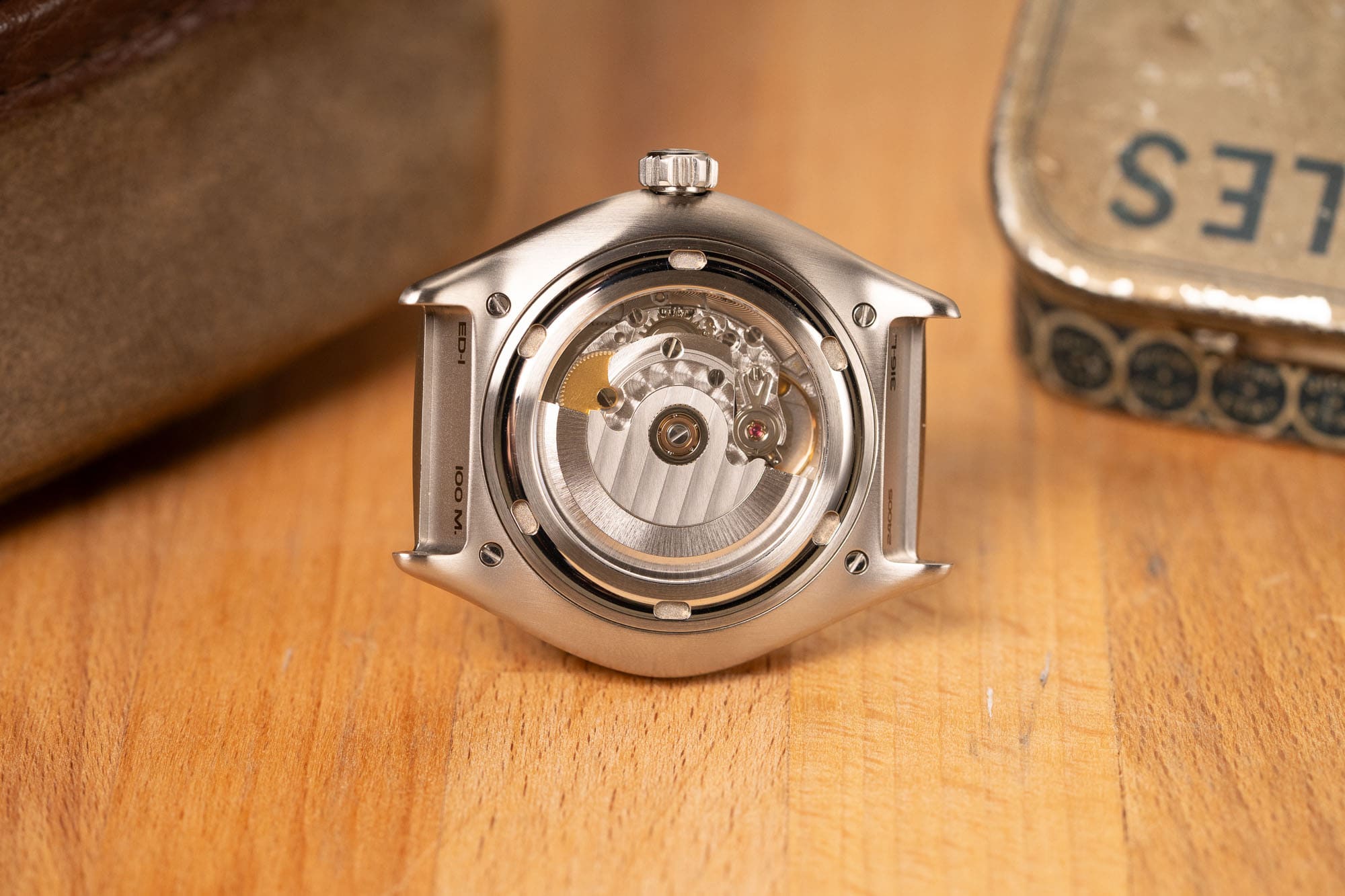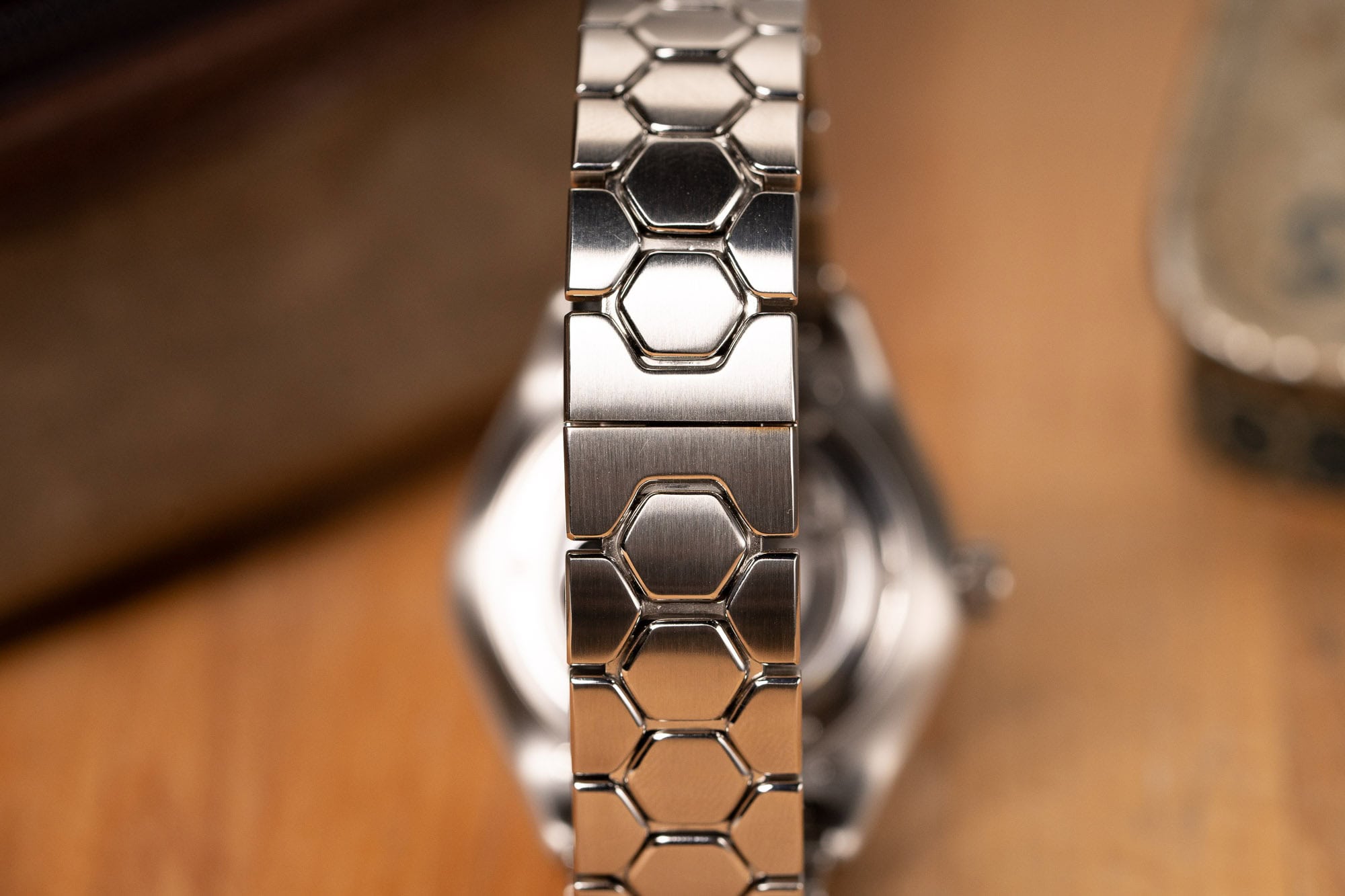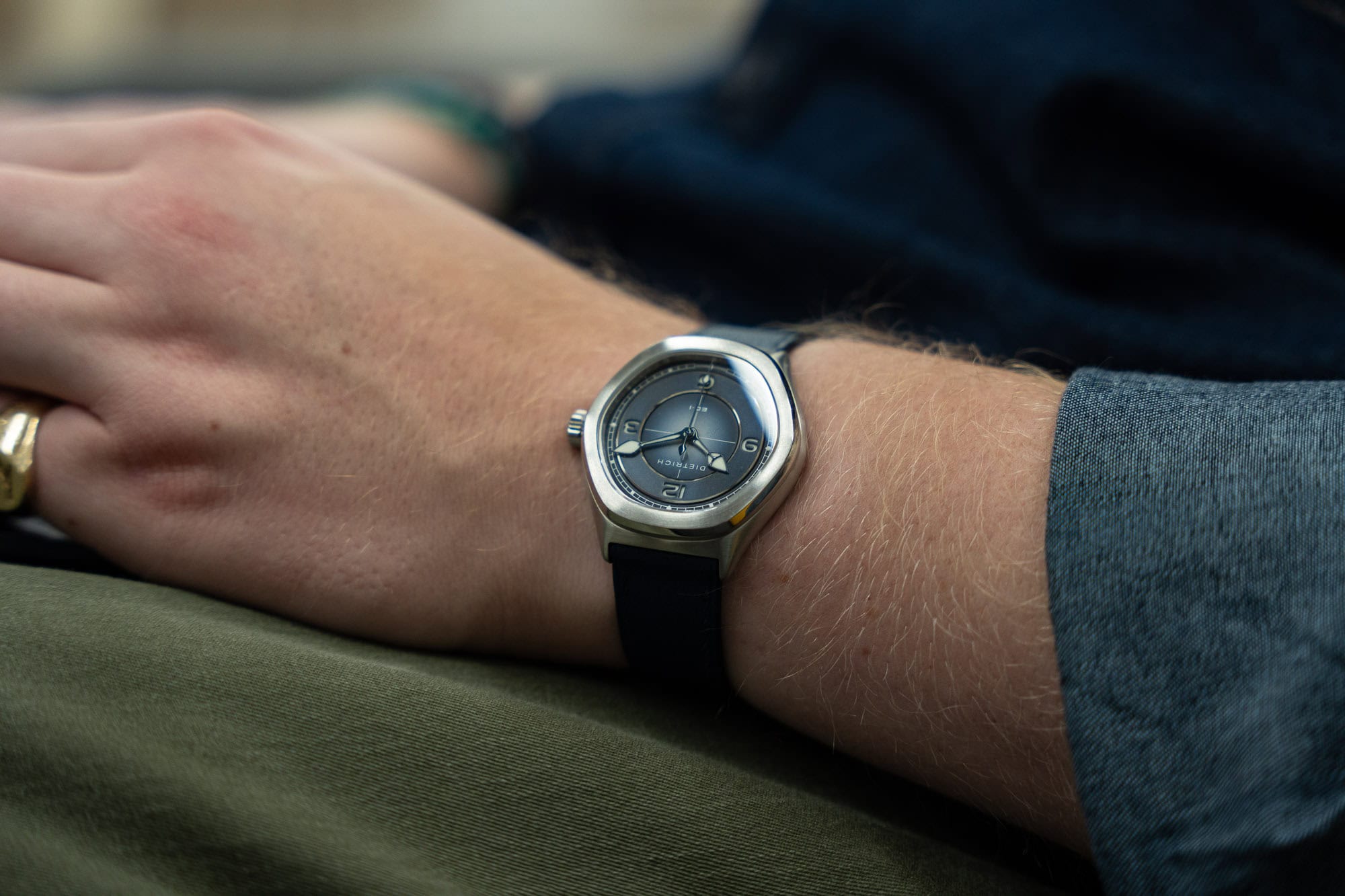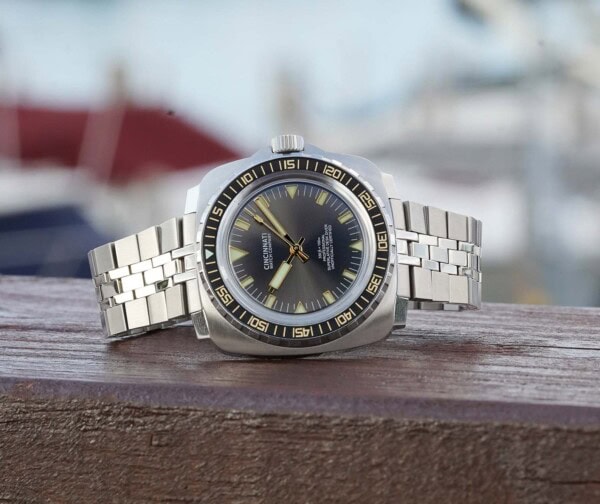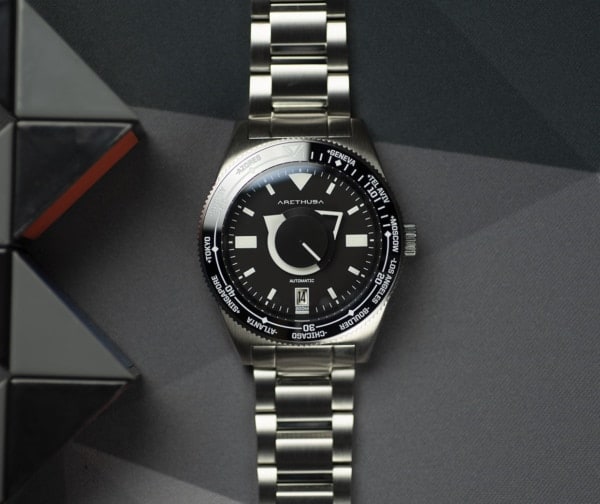Everyday watches are also the kind of watches that have been, at least mostly, replaced. Sure, we occasionally get something like the LMM-01 from Merci, the Lorier Astra, or any number of releases from Baltic but, broadly, enthusiasts tend to gravitate towards specificity, and the general ‘civilian’ public seems to all wear Apple Watches. And yet, increasingly, I find myself drawn to these “everyday watches.” The ED-1 sits squarely in this odd chasm, threading the needle between utilitarian and dressy with aplomb.

The ED-1 takes many of the design elements we’ve seen from Dietrich over the years and synthesizes them into a cohesive and immensely wearable package. Don’t let the smaller footprint fool you though, the ED-1 still stands out, but in a more subdued fashion than, say, the 46mm OT-1 Zach Weiss reviewed almost a decade ago.
Dimensionally, the Dietrich ED-1 hits a sweet spot, coming in at a modest 39mm across, 46mm lug-to-lug, and 11mm thick. As one would expect from those dimensions, the case wears compactly and comfortably. It’s all right in the Goldilocks zone and looks as good on my 7.5” wrist as it does on wrists an inch or two smaller. The stainless steel case of the ED-1, which is water resistant to 100m and includes a screw-down crown, is almost elven in its architecture. It is mostly devoid of sharp creases, and in an era of watch design characterized by sharp angles and stark lines, the ED-1 is a refreshing change of pace — one that feels like a throwback to a different time.

The rounded look of the ED-1’s case is made far more interesting thanks to the return of one of Dietrich’s signature design elements, the hexagonal bezel. The shape, which is in turn reflected throughout the case, prevents the ED-1 from feeling too pebble-y and rounded, and reinforces the organic look of the ED-1. The polished edge of the bezel (the case’s only polished element) emphasizes the transition from bezel to mid-case and acts as a nice frame for what is possibly the ED-1’s most interesting visual trick — the transition from hexagonal bezel to round dial.

With a shaped bezel, watchmakers tend to fall back on one of two techniques to transition from bezel to dial. The first, which you’ll find on models like the Royal Oak or The Twelve from Christopher Ward, is to shape the outer edge of the bezel but use a round inner edge to allow for a standard circular crystal and dial. The second, as used by the Credor Locomotive earlier this year, is to embrace the shaped layout and match the crystal and dial to the form of the bezel.

Either approach works well, but here, Dietrich has opted for a third path, embracing the slight dissonance that comes out of the relationship between a circular dial and a shaped bezel. The result is a watch whose dial, case, and crystal interact with one another in a way I’ve rarely experienced, adding depth and complexity to what is otherwise a relatively straightforward watch, and emphasizing the hexagonal bezel without requiring sharp edges and a dramatic version of the shape.
In keeping with the concept of the “ultimate everyday watch,” the dial of the Dietrich ED-1 is simple, but very well executed. Available in either a blue or green gradient, the ED-1 uses a sandwich construction paired with a sector dial to offer up a modern take on a fairly classic layout. Sectors are divided by embossed silver tracks, with a crosshair motif at the center of the dial and a printed minute track with luminous pips at five-minute intervals runs around the edge.

Luminous numerals at the cardinal points (though excluding 3 o’clock if you opt for a date) glow brightly thanks to the copious lume used to create the sandwich dial, and a lacquered, color-matched handset — whose hybrid leaf/cathedral design was first seen on the Organic Time series — tie the dial together. The whole thing screams Dietrich, even if it does so with some restraint.

On a technical level, the Dietrich ED-1 is powered by an automatic Sellita SW200 and is available with or without a date. I would opt for the dateless variant, but I am well aware that many find the inclusion of a date to be critical, especially on a watch meant to be worn consistently. Here, the date replaces the 3 o’clock marker. The date window is elegantly framed by an extension of the silver sector track, and the date wheel is white with black lettering. I’m sure some would have preferred a color-matched date wheel, but I think the white wheel here works well and preserves some of the symmetry of the watch. I applaud the choice of the Sellita here — a watch meant to be worn every day needs a robust and serviceable movement to match, and the SW200 certainly checks those boxes.

Wearing the Dietrich ED-1, I couldn’t help but find myself comparing it to some other favorites of mine: the Ebel Sport Classic and the somewhat divisive TAG Heuer S/El. I’ve long been enamored by ‘90s watch design, despite its somewhat dinged-up reputation, and watches like the TAG Heuer S/El (the predecessor to the oft-maligned Link) have, in particular, held my attention for longer than one might expect. The Dietrich ED-1 feels very much of the lineage of these watches, and so it only feels appropriate to mention them to highlight the one spot where the Dietrich comes up just a little short.

The Dietrich ED-1 comes with both a stainless steel bracelet and a color-matched Delugs leather strap. Each is comfortable and well made (Delugs is admittedly one of my favorite purveyors of leather straps, so I may be slightly biased), and each looks great fitted to the watch. Unfortunately, the spot where they meet the watch leaves a little to be desired.
Where watches like the Ebel and TAG bridged the gap between their lugs with rounded flair, the ED-1 features a slightly harsh transition. I’m not sure it would be as noticeable if it weren’t essentially the only continuous straight line on the watch, but, at least to my eye, it stood out. Wearing the ED-1 on the included leather strap mitigated the issue somewhat, but there is no getting around the dark gap that accompanies the bracelet.

Of course, this shouldn’t be a deal breaker for most, but it certainly caught my eye, and I would likely be quick to swap the bracelet for the leather was I to pick up the ED-1 — something which would be easy to do thanks to the bracelet’s quick-release spring bars. Besides, with a 20mm lug width, the ED-1 will play host to myriad straps nicely.

I came away from my time with the Dietrich ED-1 enjoying it, for all the reasons listed above, as well as one other. Frequently, when I had the ED-1 on my wrist, I forgot it was there. Not because it didn’t stand out, but because it does what it sets out to do brilliantly. It feels like a companion, like a watch you could wear every day. Which I guess is sort of the point. Dietrich









 Featured Videos
Featured Videos




